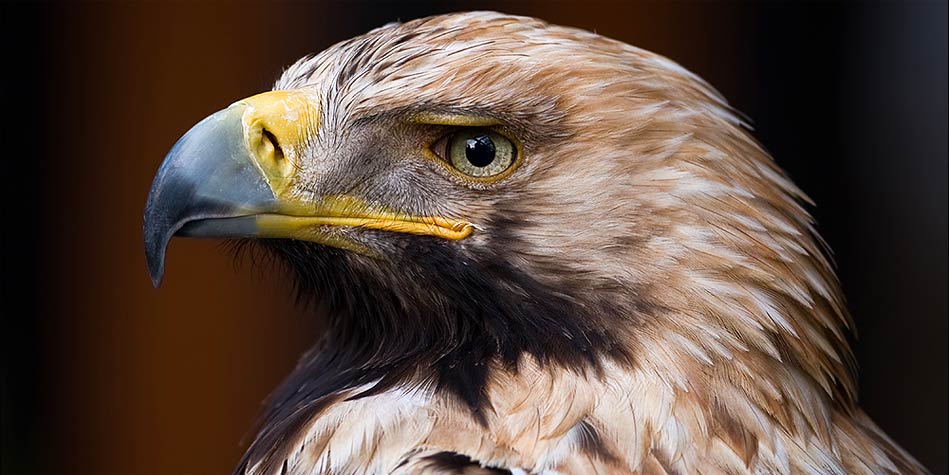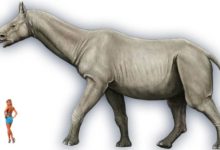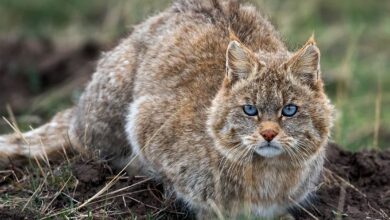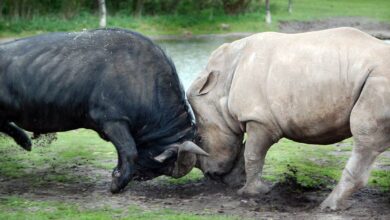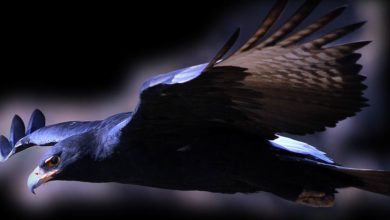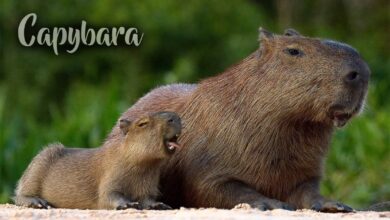Eastern imperial eagle (Aquila heliaca)
Eastern imperial eagles are unapproachable birds, that keep tight-knit families, rarely revealing themselves to the human eye. The eastern imperial eagle is one of many eagles that builds huge arboreal nests, yet the structures it builds have earned themselves an individual denomination as a result of their customary location.
Classification
- Class: Aves
- Order: Accipitriformes
- Family: Accipitridae
- Genus: Aquila
- Species: Aquila heliaca
- Names: Eastern imperial eagle
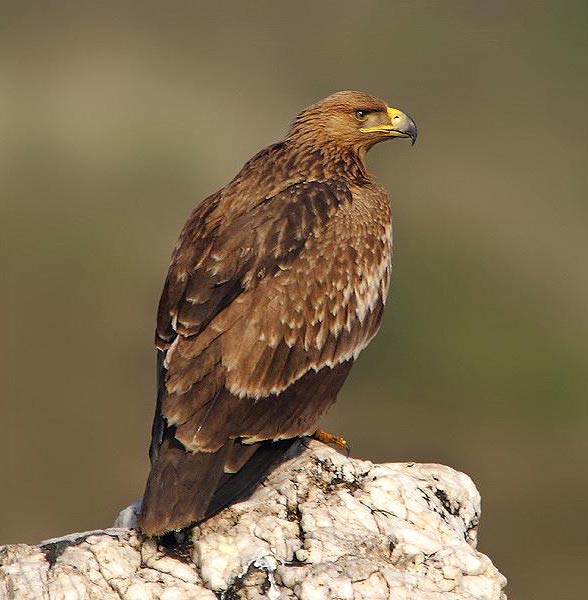
Areas of occurrence
It nests and breeds all the way from Southeast Europe to the West and Central Asia. Most birds migrate, changing their habitats prior to winter – in these periods they opt for the eastern parts of Africa (Tanzania) and South-East Asia (Arabian Peninsula, the Indian subcontinent, northern Pakistan and East China).
It can also be observed in northern Russia, Northeast India, northern Pakistan, Mongolia and Siberia.
Rarely appears in Poland, it clearly prefers Hungary and Slovakia instead.
It typically is a lowland species, yet due to loss of habitats and hunts, it has been forced to move to higher altitudes. It lives at an altitude of up to 1800 meters (5900 ft) above sea level, though it has been observed as high as 3900 meters (12800 ft) above sea level, including woods, steppes, wooded croplands, low hills and mountain slopes. The last lowland population has survived in the Caucasus geographical region, making riparian forests and steppes its habitat.
Those eagles that spend winters in India choose the open desert formation, plains, wetlands and shrubberies. It is believed that during winter it favors humid areas the most. In the migratory period, when it is capable of flying 8000 km (5000 mi) in 6 weeks, it can form temporary flocks of over 10 eagles.
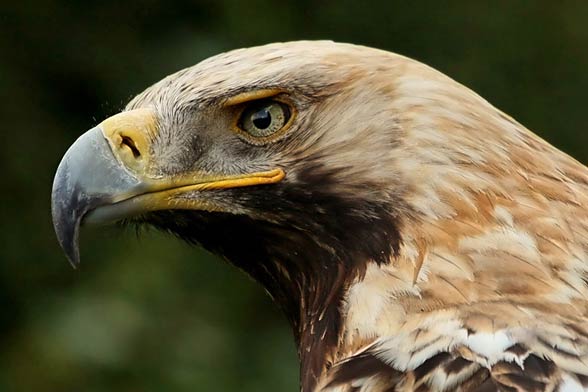
Characteristics
Eastern imperial eagle is a sizeable bird, measuring 72 – 90 cm (28–35 in) of length, with a wingspan of 1.8 – 2.16 m (5.9–7.1 ft) and weighing 2.45 – 4.55 kg (5.4–10 lb). Female eagles are one quarter larger than males.
It highly resembles the Spanish imperial eagle (Aquila adalberti) in terms of outline and feathering, except for the fact that the eastern imperial eagle has a smaller white spot at the point where the wings join the torso, yet in general it is larger than its southern cousin.
The feathering is mostly brown, only the tip of the head and sides of the neck are brightly golden, on the ‘shoulders’ there is an abovementioned white spot. The tail is dark grey, covered with black and white stripes in the central part, edges of tail feathers being white. Underneath the tail russet and beige colors are dominant. The eyes and legs are yellow, the beak is grey, with a black tip. The wings, tail, head and feet with crooked talons are substantially large.
Adolescent eagles are mostly light brown, with dark brown smudges on their heads, breasts and wings. The covert feathers have white tips, whereas their bottoms are buff in terms of color. The vocalizations include acute, deep ‘barks’, repeated over 8 – 10 times.
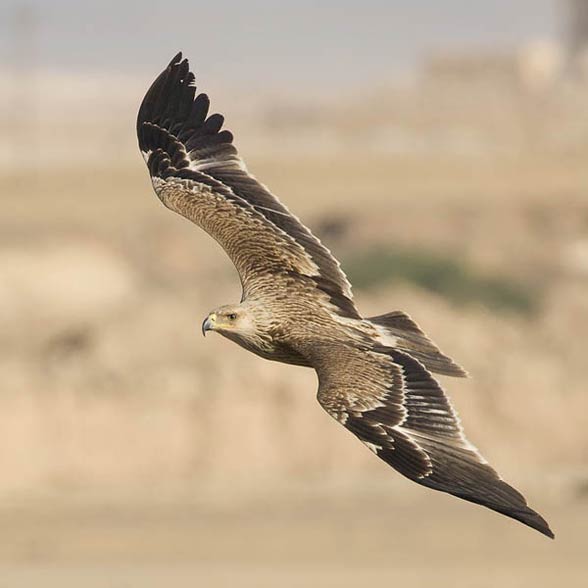
Diet and hunting style
Normally it hunts solitarily, as it has perfectly adapted to hunting for small mammals, including European ground squirrels, reptiles and birds; it also eats carrion. It often catches marmots, gerbils, hamsters, rabbits and hares.
Among reptiles, it likes tortoises the most, among birds it has favored mallards, geese, pigeons, birds of the crow family, or even flamingos. Additionally, it eats insects and other raptors the size of a hen harrier (Circus cyaneus). It rarely hunts for fish, the vast majority of its prey does not exceed 2 kg (4.4 lb) of weight.
Despite being best adapted to hunting solo, it may also hunt with a partner. Sometimes it steals food from other raptors (kleptoparasitism), which occasionally proves to be the foundation of its diet and hunting strategy.
It can also hunt on the ground, lying in wait at the rodent burrows, awaiting them sticking their head out of the hideaway. As this bird has an outstanding sight, it can easily spot prey from the air, during patrolling glides, which is followed by a dive towards the victim. It hunts between 10 am and noon, and from 5 pm until dusk.
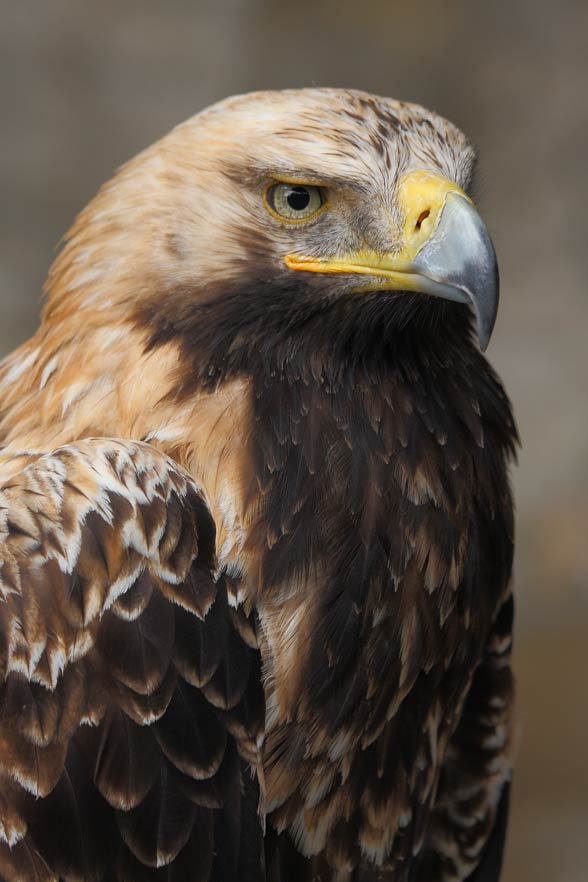
Breeding
Like most eagles the eastern imperial eagle is also a monogamous bird: it finds a life partner in the fourth year of age.
The breeding season lasts from February to July in Spain, whereas in other habitats it lasts from March until September.
An eagle pair builds several nests on the tall tree tops, about 10 – 20 meters (33 – 66 ft) above the ground; the building spot is usually highly inaccessible for predators. The structure is 1.2 – 1.5 meters (4 – 5 ft) wide in diameter and 60 – 70 cm (2 – 2.3 ft) deep, though they may reach a considerably larger size. The nest weighs up to 100 kg (220 lb) and is bedded with fur, twigs, grass and fresh vegetation.
One clutch consists of 1 to 4 eggs, which are subsequently incubated by both parents for the next 43 – 52 days. Young eagles grow their feathers after 63 – 77 days, remaining in the nest for about 160 days, until they reach hunting independence (though they usually learn to fly within the first 2 months). As for many birds of prey acts of fratricide (cainism) are common – the older and stronger chick often kills the younger one.
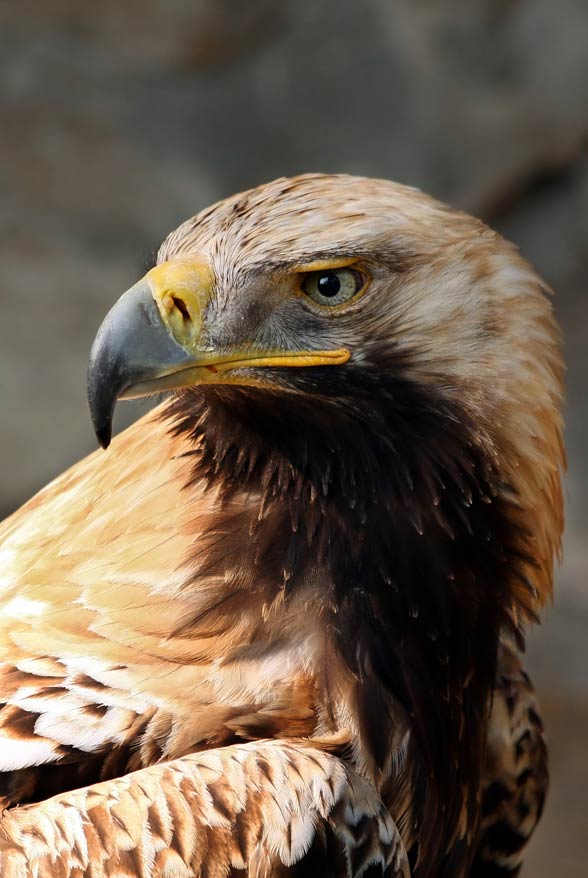
Detailed characteristics / size
Eastern imperial eagle (Aquila heliaca)
- Body length:
- 72 – 90 cm (28–35in)
- average: 75 – 84 cm (29.5–33in)
- males are smaller than females
- Wingspan: 180 – 216 cm (5.9–7.1 ft)
- Weight:
- 2.45 – 4.55 kilograms (5.4–10 lb)
- males are lighter than females
- Lifespan: 16,6 years
- Population: 3,500-15,000 individuals (it’s difficult to say exactly)

Eastern imperial eagle – interesting facts
- The name Heliaca is derived from the Greek heliakos, which means ‘from the sun’, hence the adjective ‘imperial’ in the common name.
- Spanish imperial eagle was formerly considered an eastern imperial eagle subspecies (hence the similarity in naming). Today these two birds are regarded as two separate species, due to significant morphological, genetic and ecological differences.
- The Austro-Hungarian monarch has appointed the eastern imperial eagle a heraldic animal, yet it still did not help the species to survive in that state.
- In East Europe the eastern imperial eagle is a threatened species, it has ceased to exist in its many original habitats e.g. in Austria and Hungary. Presently the only European populations inhabit the Pannonian Basin living mainly in the northern Hungarian mountains and the southern part of Slovakia. The breeding population in Hungary counts 105 pairs, whereas in the Austrian-Czech border region there are 15 – 20 breeding pairs.
- The largest known eastern imperial eagle’s nests are 2.4 meters (7.9 ft) wide in diameter and 1.8 m (5.9 ft) deep.
- Eastern imperial eagle’s nest is commonly referred to as eyrie (also aerie; the common name for a highly located room or building) due to its large size and inaccessibility to intruders.
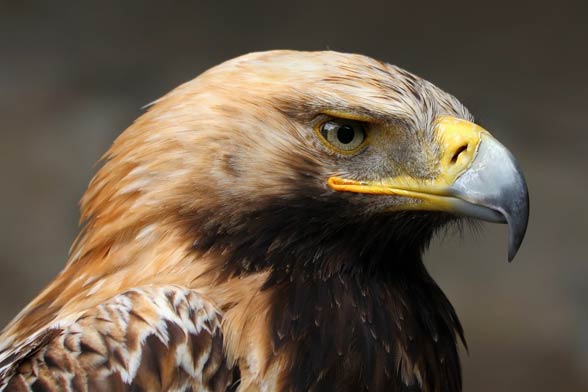
Recommended
- Eagles
- Animals records
- Largest eagles Top10
- Largest birds of prey Top10
- Haast’s eagle
- Bald eagle
- Black eagle
- Steller’s sea eagle
- Philippine eagle
- Crowned eagle
- Martial eagle
- Wedge-tailed eagle
- Bearded vulture
- Fastest animals – Top 10
- Fastest birds – Top 10
- Most venomous snakes – Top 10
- Largest sharks Top 10
- Heaviest land animals
- Largest crocodiles Top 10
- Largest whales TOP 10
- Longest snakes Top 10
- Highest (Top) flying bird – Top 10
- Largest and heaviest birds
- Largest turtles TOP 10

